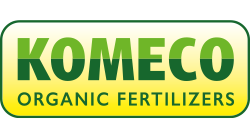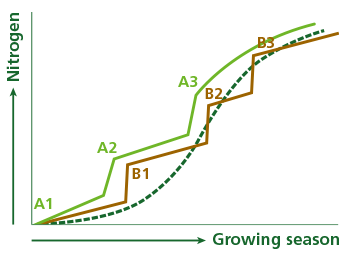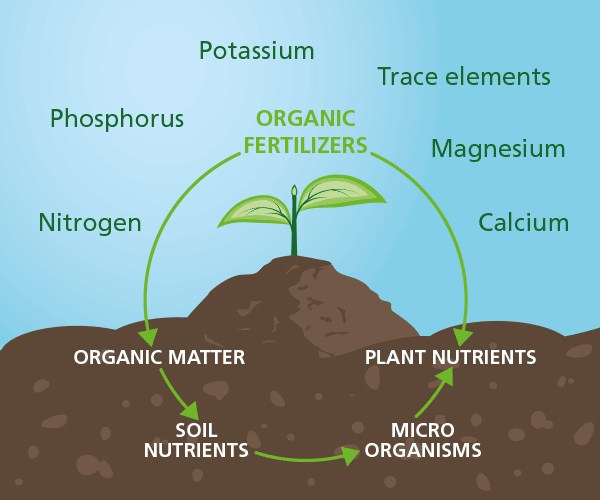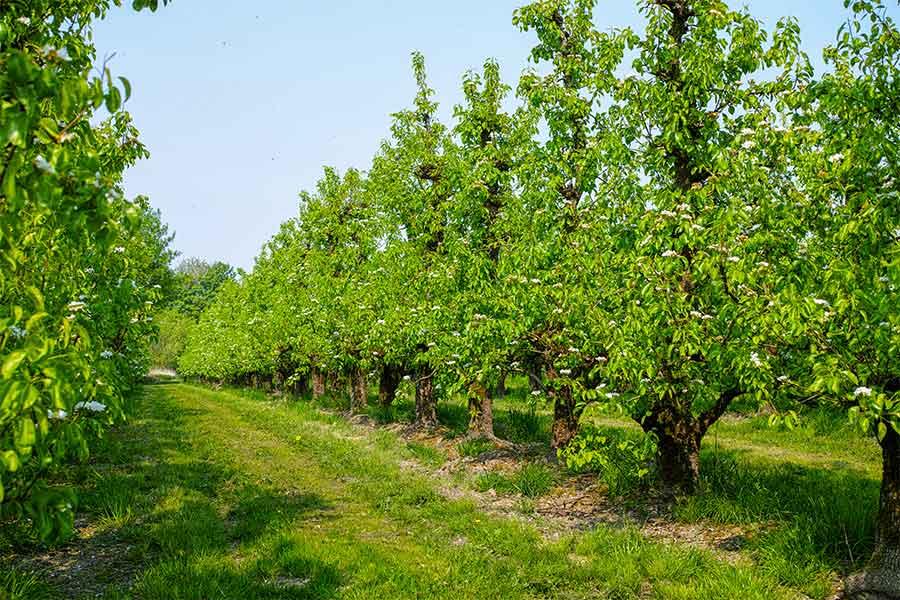PLANT NUTRITION
Not only a soil needs to be provided with the right nutrients. This also counts for plants and crops. Plants cannot live on a poor soil. When a soil receives the right nutrition, this will affect the growth of plants and the crop cycle as well.
Most of the times the focus lays on providing the soil with nitrogen, phosphate and potassium. The plant or crop needs more elements in order to grow, such as calcium, magnesium and trace elements.
N-P-K
Organic fertilizers contain all nutrients a plant needs in contrast to mineral fertilizers. In general it is manure that contains the nutrients, but not all elements are directly available for the plant. The part that is active is called the coefficient. For nitrogen, there is a mineral and organic concentration present in manure. The mineral concentration is available for the plant and the organic concentration will be released step by step, because of the demolition of organic matter in the soil.
Application of organic fertilizers
Komeco has carried out various tests on agricultural fields and they have shown that 60% of the nitrogen from FERTISOL will become available during the crop cycle. Within the first week half of it will be released already. More nitrogen will be released during the growth. It does depends of the crop itself. For example carrots can absorb more nitrogen than grains because the uptake period of carrots is longer. The tests have shown that 40% of the phosphate and 85% of the potassium in FERTISOL will be released during the crop cycle as well.
During cultivation we have observed the crops and we can conclude that the crop remained vital for a longer period. The leafs remained greener (results of observations in a plot of potatoes).
Both manure and organic fertilizers contain nitrogen, phosphate and potassium, but the levels can vary per batch enormously. That is why spreading manure in a plot cannot guarantee the exact levels of N-P-K. Something which is more certain by using organic fertilizers. At Komeco we mix the manure well during the controlled composting process. Therefore the composition is homogeneous and it creates pellets offering the right nutrients for every crop and plant.
Nitrogen during cultivation
The graphic shows how the availability of nitrogen develops during growing season of the crop. For this graphic we take into account a fertilization plan where we fertilize in 3 times.
The dark green dotted line is a cumulative line of crop uptake. After applying fertilization, the crop absorbs nitrogen. As the growing season progresses, more and more nitrogen will be absorbed from the total given nitrogen. Please note that the absorbed amount of nitrogen differs per crop.
The brown line represents a fertilization plan without FERTISOL. The green line shows the fertilization plan with FERTISOL. In this case the first gift (A1) is the one with FERTISOL organic fertilizer. The second (A2) and third (A3) gift consist of a different type of fertilizer.
In the fertilization plan with FERTISOL, the organic fertilizer replaces another type of fertilization. The added value of applying FERTISOL takes place at the end of the growing season. At the end of growing season it is difficult for some crops to remain vital, like you can see at the brown line. When you take FERTISOL as one of the basic fertilizers the crop remains vital until harvest.





